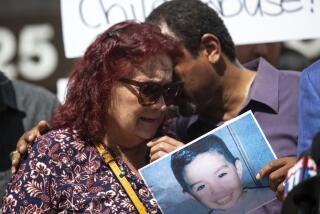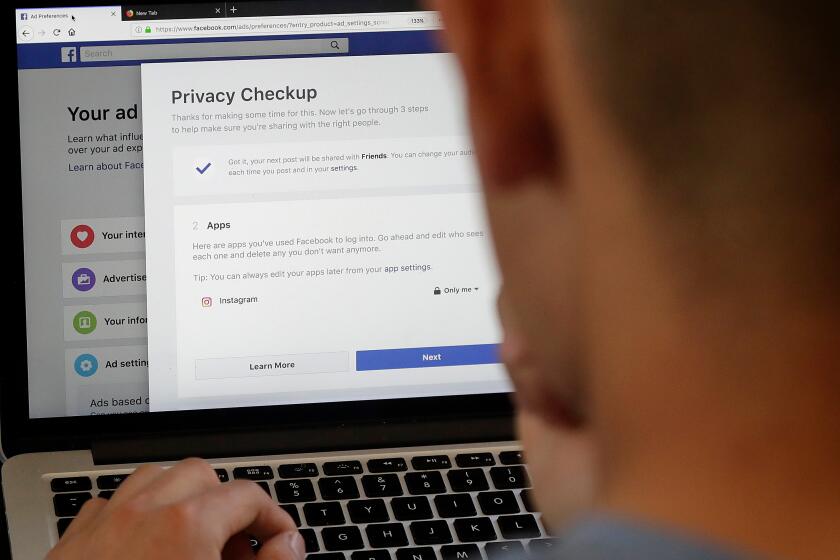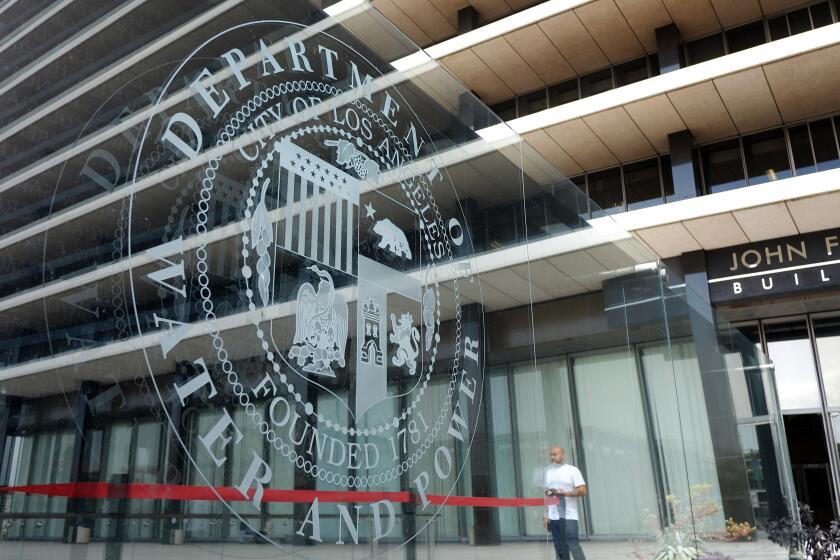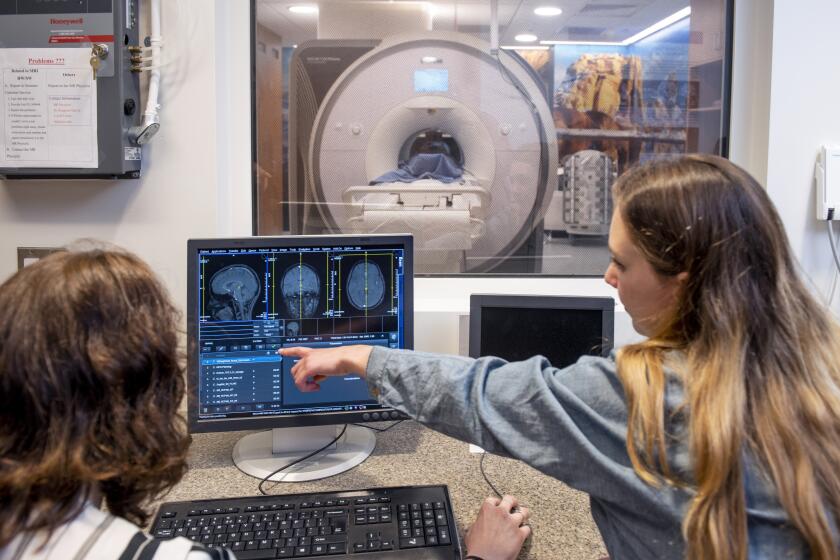Letters to the Editor: A 4-year-old dies, and the DCFS director says decisions ‘were the right ones.’ Really?
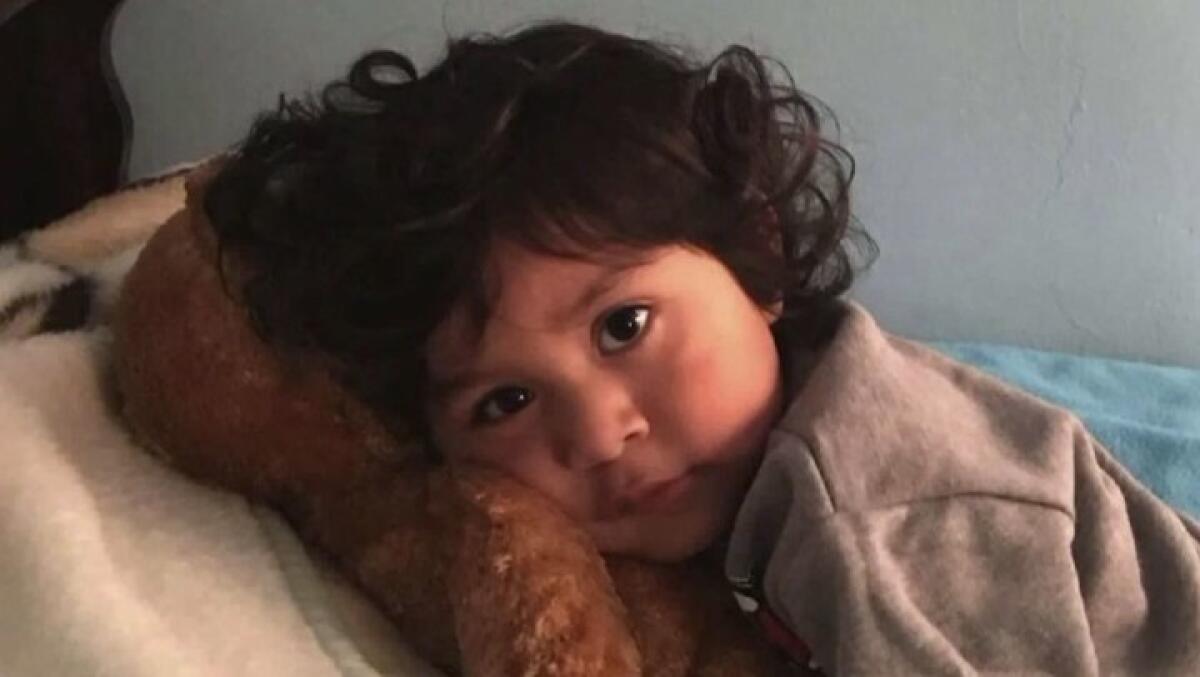
To the editor: Did Bobby Cagle, director of L.A. County’s Department of Children and Family Services, actually say, “I think my staff actually carried that process out well,” and, “I’m confident that the decisions that were made were the right ones,” after 4-year-old Noah Cuatro was allegedly abused for years before dying while under the DCFS’ watch?
In the final paragraphs of this heartbreaking and horrifying story, we learn that Noah’s DCFS caseworker and her supervisor never read the 26-page court filing for home removal submitted by his previous caseworker before they opposed and ignored the order. What?
Yes, Director Cagle, do explain to us and the Board of Supervisors how DCFS “carried that process out well.” There are too many cases of abused children being brought to the attention of authorities and, somehow, these children still die or continue to be abused.
With an attitude like Cagle’s, we can only expect more child neglect, abuse and death.
Pauline Flanders, Whittier
..
To the editor: During the years in which I assessed potentially suicidal patients for 72-hour holds, I always tried to get it right, to protect people from their most desperate self-destructive impulses.
In truth, according to a study conducted by Harvard psychology professor Matthew K. Nock, the country’s most famous scholar on suicide, clinicians are no better than a coin toss at predicting who will attempt suicide, even after treatment.
Child protection agencies all over the country are increasingly turning to predictive analysis tools to guide social workers on when children should be removed from their homes. Racial justice reformers recognize that often the biases of the people developing these algorithms are baked into the models.
How can we get it right? As I often said when I informed patients who denied attempting to harm themselves that I was placing them on a legal hold, “The behavior speaks for itself.”
I submit that the same approach applies here. Children do not blacken their own eyes or break their own bones. Let the family’s behavior toward a child speak for itself.
Teresa DeCrescenzo, Studio City
The writer is a licensed clinical social worker.
..
To the editor: Noah’s story is so sad that it is difficult to read. The relative who called the county’s child abuse hotline said it all: “Nobody’s going to advocate for him.”
There is nothing wrong with trying to reunite abused and neglected children with their families, except when that goal conflicts with keeping the child safe. Noah’s death was a result of the DCFS’ conflicting goals of protecting children and keeping families intact.
Noah had been taken away from his parents; later, he was returned. A report stated he was losing weight and could not walk as a 2-year-old. He was placed in another home and thrived. At this point Noah needed an advocate who was not caught in the system.
The social worker who tried to have Noah removed from his parents’ care was sidelined, so the urgency to protect him was lost. What is the commissioner’s role in juvenile court? Was it to protect the child? Consider the child first? I don’t think so.
Cagle, the DCFS director, does not seem to realize there is a problem with his agency, which adds to the depressive nature of this story.
Nancy Linton Weiss, Westlake Village
The writer is a licensed clinical social worker.
More to Read
A cure for the common opinion
Get thought-provoking perspectives with our weekly newsletter.
You may occasionally receive promotional content from the Los Angeles Times.


